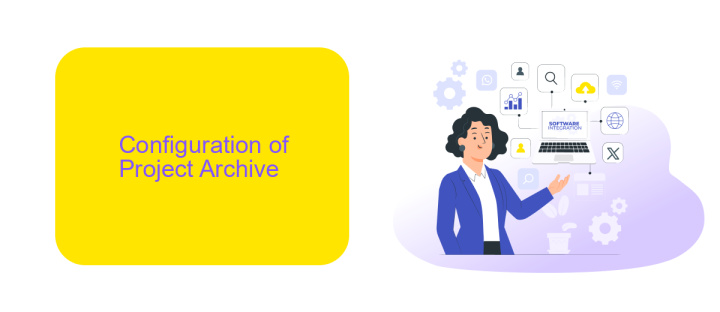When Publishing a Project What is the Type of File the Entire Project is Archived to in UiPath
When publishing a project in UiPath, it's crucial to understand the type of file format used to archive the entire project. This ensures seamless deployment, version control, and collaboration among team members. The standardized file format not only encapsulates all necessary components but also simplifies the process of sharing and reusing automation workflows. So, what exactly is this file format?
Select Project to Archive
To begin the process of archiving your UiPath project, you first need to select the project you wish to archive. This step is crucial as it ensures that the correct files and configurations are included in the archive.
- Open UiPath Studio and navigate to the "Projects" tab.
- Locate the project you want to archive from the list of available projects.
- Click on the project to select it, ensuring it is highlighted.
Once you have selected your project, you can proceed with the archiving process. For those using integration services like ApiX-Drive, this step can also include setting up automated workflows to streamline the archiving and deployment process. ApiX-Drive allows you to connect various applications and automate tasks, making it easier to manage your UiPath project archives and integrations efficiently.
Configuration of Project Archive

When configuring the project archive in UiPath, the process involves specifying the settings and parameters that determine how the project files are packed and stored. Initially, you need to navigate to the project settings where you can define the output directory, file naming conventions, and the type of archive format, typically a .nupkg file. Ensuring that all dependencies and external libraries are included is crucial for the seamless execution of the project once archived.
For projects requiring additional integrations, services like ApiX-Drive can be utilized to streamline the configuration process. ApiX-Drive offers a user-friendly interface that allows seamless connection to various applications and services, ensuring that all necessary data pipelines and workflows are properly set up. By incorporating ApiX-Drive, you can automate the synchronization of data between UiPath and other platforms, enhancing the efficiency and reliability of your project archives.
Save the Archive Location

When archiving your entire project in UiPath, it is crucial to save the archive in a location that is both secure and easily accessible for future use. Properly managing the archive location ensures that your project files are protected and can be retrieved whenever necessary.
- First, choose a secure storage solution. Cloud storage services like Google Drive, Dropbox, or OneDrive provide reliable options for saving your project archive.
- Next, create a dedicated folder for your UiPath project archives. This helps in organizing and locating your files quickly.
- Use a consistent naming convention for your archive files. Including the project name and date in the file name can be very helpful.
- Consider setting up automated backups using integration services like ApiX-Drive. ApiX-Drive allows you to schedule regular backups and integrates seamlessly with various cloud storage solutions.
By following these steps, you can ensure that your UiPath project archives are stored securely and are easily accessible. Proper archiving practices not only safeguard your work but also streamline the process of project retrieval and management.
Compression Type Options

When publishing a project in UiPath, it is crucial to understand the different compression type options available. Compression helps in reducing the file size, making it easier to share and store the project. UiPath offers several types of compression methods to suit various needs.
The most common compression types used in UiPath include ZIP, RAR, and 7z. Each of these formats has its own advantages and use cases. The choice of compression type can depend on factors such as compatibility with other systems, compression efficiency, and the need for password protection.
- ZIP: Widely supported across different platforms and provides a good balance between compression ratio and speed.
- RAR: Offers better compression ratios compared to ZIP but may require additional software for extraction.
- 7z: Known for its high compression ratio and support for large file sizes, but may not be as universally supported as ZIP.
For those looking to integrate their UiPath projects with other applications and services, tools like ApiX-Drive can be highly beneficial. ApiX-Drive allows seamless integration and automation of data transfer between UiPath and various other platforms, enhancing workflow efficiency and productivity.
Importance of Project Archiving
Archiving a project in UiPath is crucial for maintaining a well-organized and efficient workflow. By archiving, you ensure that all relevant files, configurations, and dependencies are stored in a single, easily accessible location. This not only facilitates seamless collaboration among team members but also aids in troubleshooting and recovery in case of any issues. Proper archiving practices contribute to the overall stability and reliability of your automation projects, ensuring that they can be revisited and updated with minimal effort.
Moreover, effective project archiving is essential for integrating various services and tools. For instance, using a service like ApiX-Drive can streamline the process of connecting your UiPath projects with other platforms, enhancing automation capabilities. ApiX-Drive simplifies the setup of integrations, allowing you to transfer data and trigger workflows effortlessly. By maintaining well-archived projects, you can leverage such services more efficiently, ensuring that all necessary components are readily available for smooth and uninterrupted operation.


FAQ
What is the type of file the entire project is archived to in UiPath?
How can I deploy my UiPath project to a production environment?
Can I automate the deployment of my UiPath projects?
What should I do if my .nupkg file is too large to publish?
Is it possible to version control my UiPath projects?
Strive to take your business to the next level, achieve your goals faster and more efficiently? Apix-Drive is your reliable assistant for these tasks. An online service and application connector will help you automate key business processes and get rid of the routine. You and your employees will free up time for important core tasks. Try Apix-Drive features for free to see the effectiveness of the online connector for yourself.

